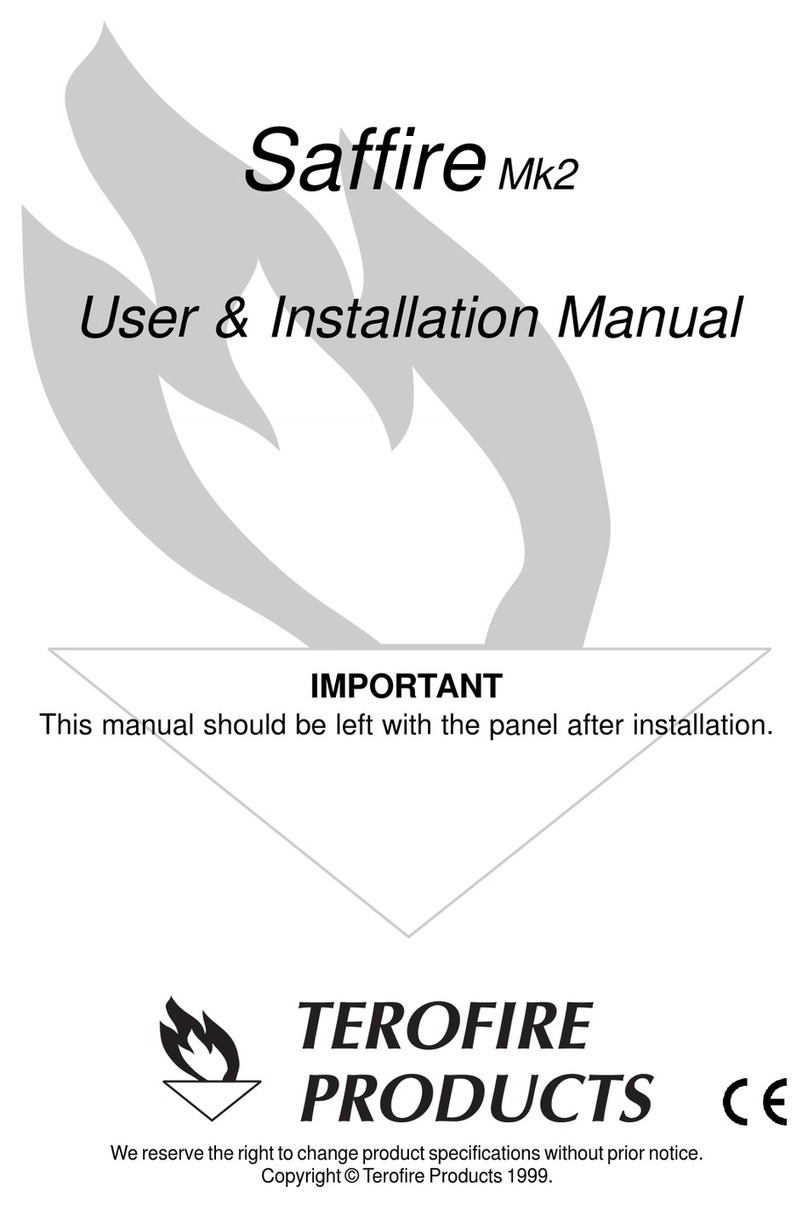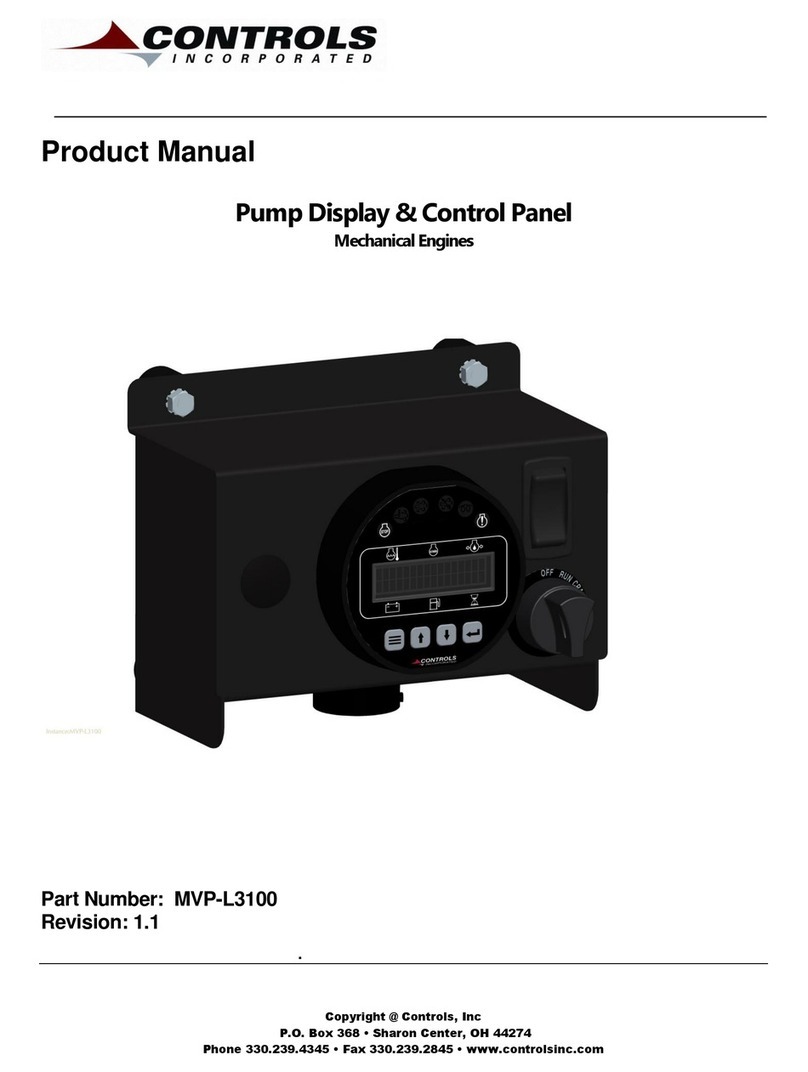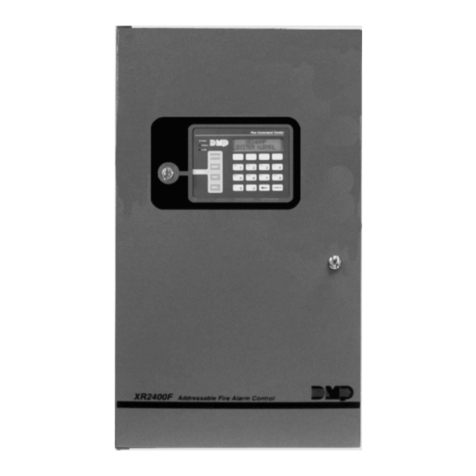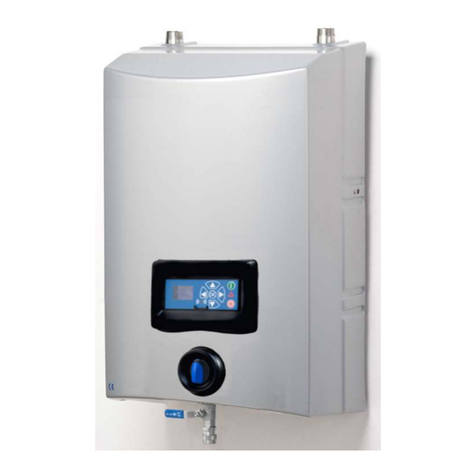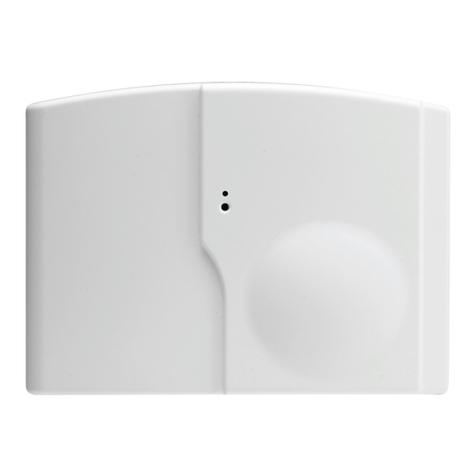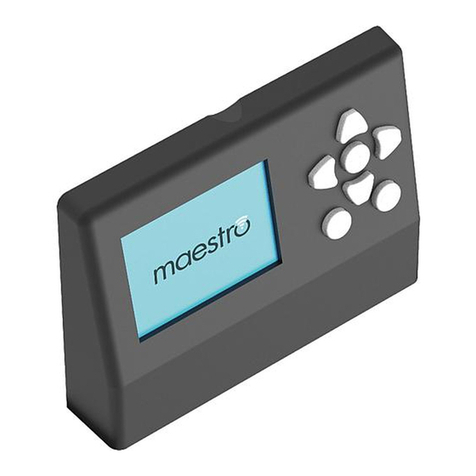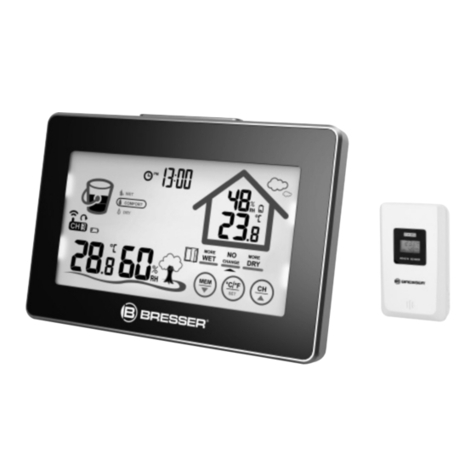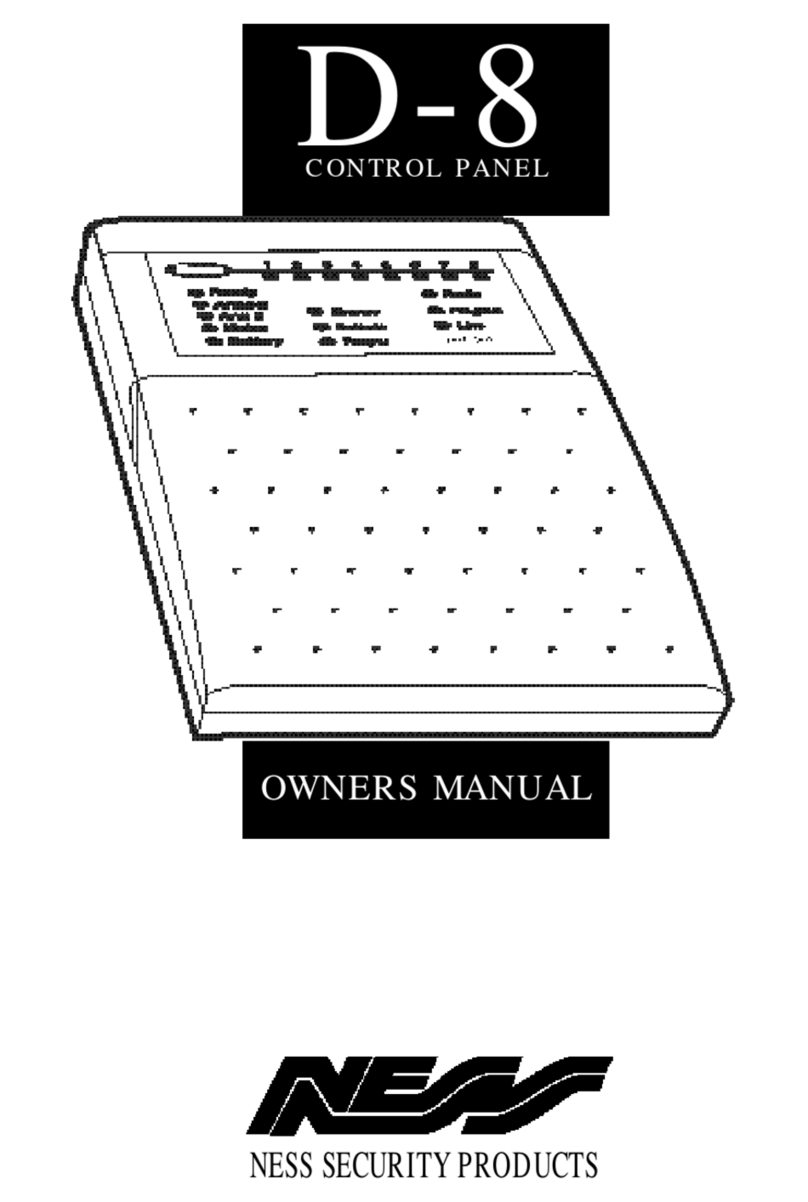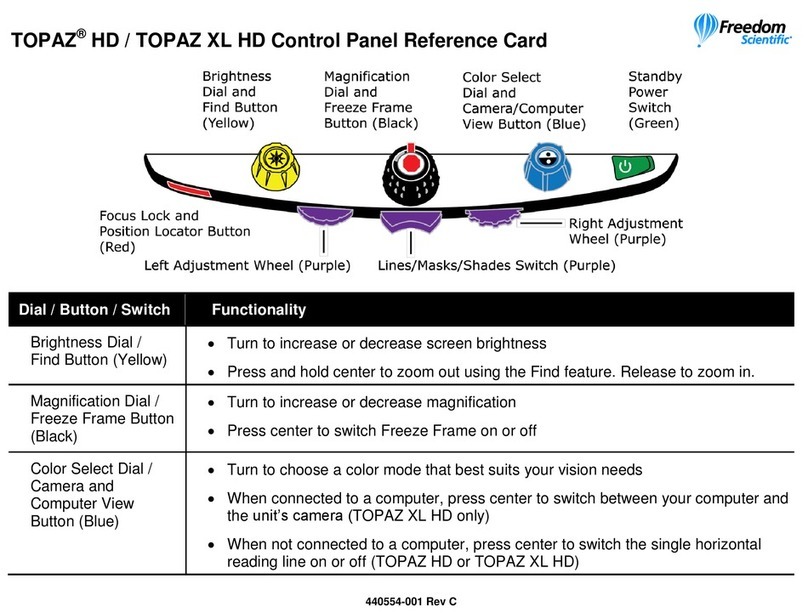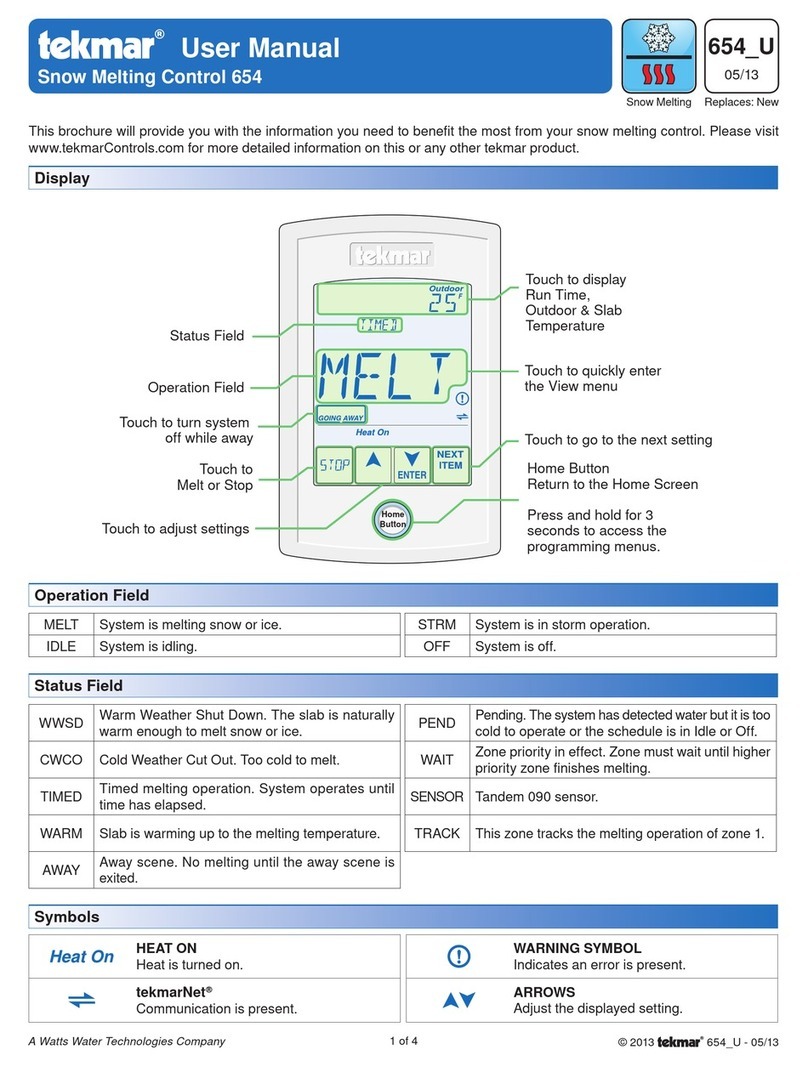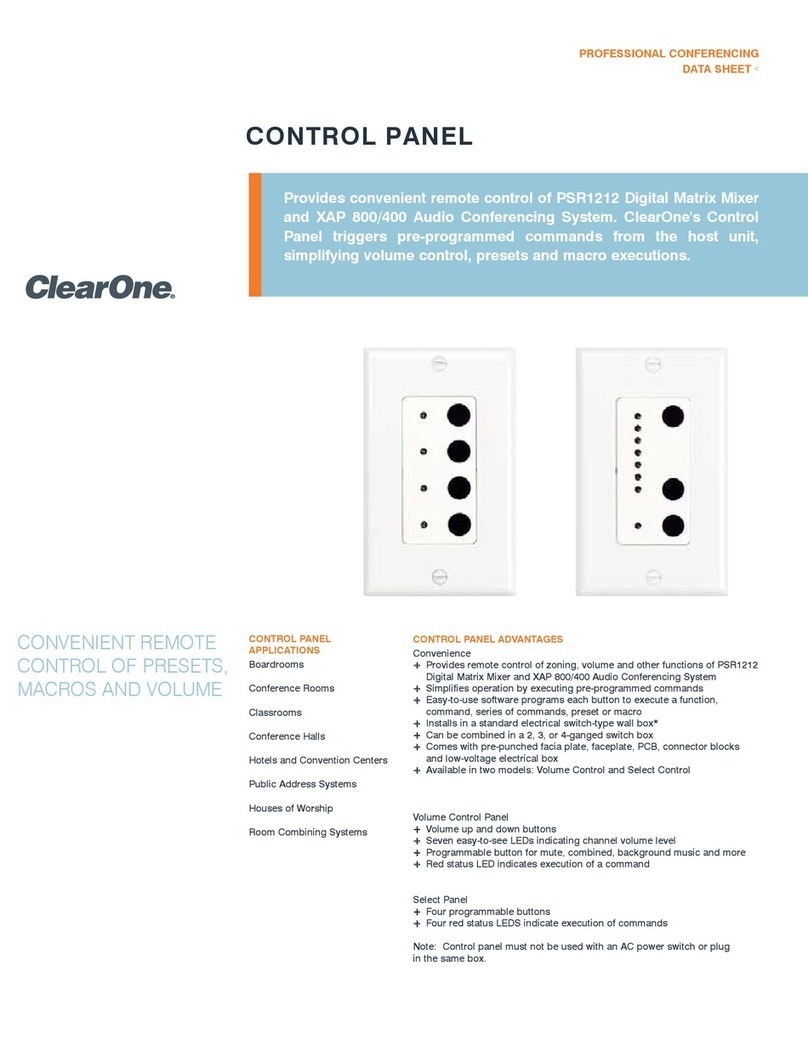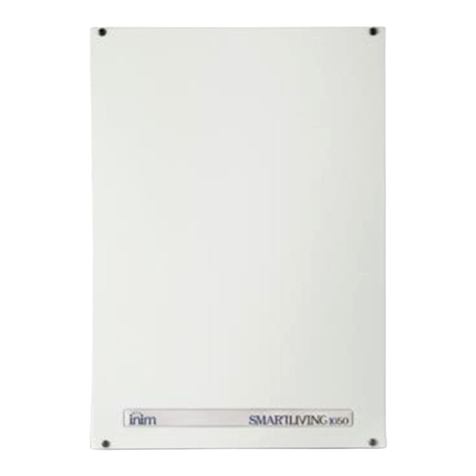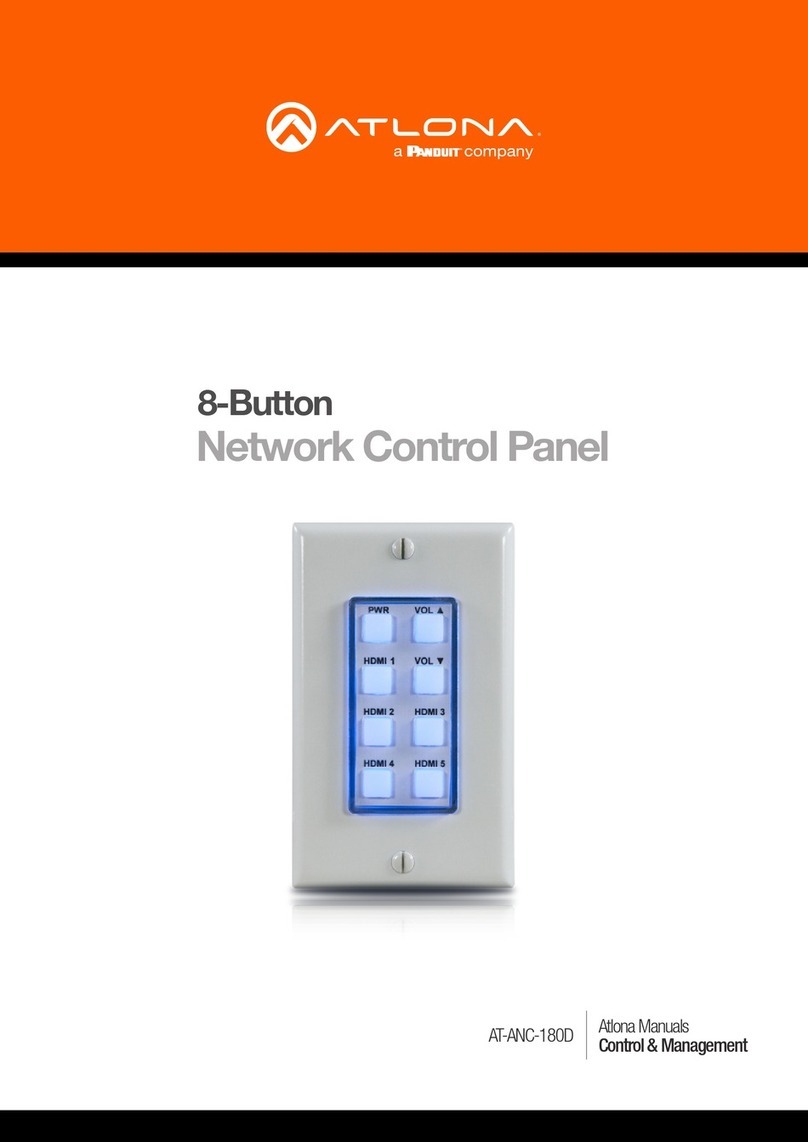Terofire Products Plus Guide

Terofire Plus
User & Installation Manual
IMPORTANT
This manual should be left with the panel after installation.
Wereservethe rightto changeproduct specificationswithout priornotice.
Copyright© TerofireProducts 1999.

Terofire Products
2
Introduction
The information provided in this manual covers the Terofire Plus range
of fire alarm control panels. The Terofire range is designed to meet the
requirements of BS5839 Parts 1 & 4 1988 and includes panels of 2, 4,
6, 8 and 12 zones.
This product should be installed, commissioned and maintained by
suitably qualified service personnel with reference to IEE regulations
and any statutory requirements.
General Description
The Terofire Plus range of fire alarm control panels are microprocessor
controlled and are available with 2-12 sense zones (detector zones).
The Terofire 12 is provided with 4 alarm zones (bell zones) while the
other panels in the range have 2 alarm zones. All Terofire Plus panels
have a one man test facility, class change input, fault output and two
sets of volt free changeover contacts which operate on fire. If a fire is
detected by a device on a sense zone, the alarm zone devices will
operate automatically and the zone that detected the fire will be
indicated on the front panel. The panel also allows the user to operate
the alarms manually.
Installation Procedure
Before proceeding with the installation, please read the section
Panel
Operation
.
Installation of the panel should be carried out by qualified
personnel.
Using the metal box as a template, mark the position of the fixing holes
on the wall. Drill and plug the wall then screw the panel to the wall.
Ensure the panel is free from knockout discs, swarf and other debris.
Do not connect any cables until after the following test is performed.
All end of line resistors should be fitted in the panel at this stage.
Connect the panel mains input to an exclusive 240V AC fused supply.
Switch the mains supply on. The internal buzzer will sound. Connect
two sealed lead acid batteries to the panel. They should be connected
in series, providing a 24V DC supply.

Terofire Plus Instruction Manual
3
With both the mains and battery supplies connected, the panel should
be silent and in its normal operating mode (power lamp on, alarms &
buzzer silent). If a fault is indicated, refer to the fault finding
section before proceeding. Disconnect the batteries and switch off
the mains supply. Remove the 3k3 end of line resistor from sense
zone 1. Terminate sense zone 1 circuit wiring in the panel observing
correct polarity and fit the end of line resistor at the extreme end of the
circuit. Check that all the detectors and call points are correctly wired.
With sense zone 1 connected and all other end of line resistors fitted
inside the panel, connect the mains and battery supplies. If the panel
indicates a fault, refer to the fault finding section before
proceeding. Do not megger cables connected to either the panel or
any field devices. If no faults are indicated then power down the panel
and follow the same procedure with the additional sense zones and
then the alarm zones. Adding the zones one at a time makes fault
finding and commissioning much simpler. Make sure that no bare wires
come into contact with the panel circuit boards during installation.
Detector Head Removal
The Terofire Plus range supports head removal. The basic principle of
head removal is to ensure that all call points will function even if a
detector head has been removed. When a detector head is removed,
the panel will show a fault but the sense zone circuit will remain intact.
Head removal requires either zener clamp bases or schottky diode
bases with the appropriate end of line device to be fitted. Consult the
table on page 10 for more information.

Terofire Products
4
Panel Operation
Enabling the front panel buttons.
Before being able to access the Reset, Silence, Evacuate and Test
functions, the key switch in the top left of the panel must be turned
through 90° to the ON position.
Performing a lamp test.
If the panel is in its normal condition, pressing the Reset button will
cause the panel to perform a lamp test.
Resetting the panel after a fire is detected.
To reset the panel after a fire condition, press the Silence button
followed by the Reset button.
Resetting the panel.
If any of the panel functions have been activated, pressing the Reset
button will return the panel to its normal condition.
Silencing the alarms.
If a fire is detected, the panel will automatically activate the alarm
circuits. To silence the alarms, press the Silence button. The internal
buzzer will continue to sound until the Reset button is pressed.
Silencing the internal buzzer.
If a fault is detected by the panel, the internal buzzer will sound. To
silence the buzzer press the Silence button. The buzzer will continue to
bleep every 25 seconds. A CPU Fault cannot be silenced.
Manually sounding the alarms.
Pressing the Evacuate button will sound the alarms. To silence the
alarms after the Evacuate button has been pressed, press the Reset
button.
Using the one man test function.
To put a zone into test mode, press the Test button once. Zone 1 fault
lamp will be flashing. If zone 1 is to be put into test mode press the
Silence button once. Press the Test button again to move to zone 2.
Zone 2 fault lamp will be flashing, and if zone 1 was put into test mode,
zone 1 fault lamp will be lit. The Test button cycles through the zones
and the Silence button places the selected zone in test mode.

Terofire Plus Instruction Manual
5
The test lamp will light as soon as a zone is placed in test mode.
Placing too many zones at once in test mode will leave the building
without adequate protection.
When a zone in test mode detects a fire condition, the alarms will ring
for approximately three seconds before resetting. The auxiliary
contacts do not operate during a test fire situation. If the panel is left in
test mode and no events occur for approximately 10 minutes, the panel
will automatically return to normal operation.
If a fire is detected on a zone not in test, then the panel will enter a fire
condition and exit test mode.
To exit test mode and return the panel to normal operation press the
Reset button.
Setting a zone as non-latching.
In some situations, such as interlinking fire alarm panels, it is necessary
to set a zone as non-latching. When a fire is detected on a non-latching
zone it will signal fire as usual but it will automatically reset as soon as
the device signalling fire is reset, and the auxiliary contacts will not
operate.
Setting a zone as non-latching is very similar to putting a zone into test
mode. Press and hold down the Test button on the front panel.
Momentarily press the button marked CPU RESET (SW1) inside the
panel, wait a few seconds then release the Test button. If the internal
buzzer sounds continuously and the CPU fault lamp is lit, press the
button marked W/D RESET (SW2) inside the panel. Zone 1 fault lamp
will be flashing. Press the Test button to cycle through the zones.
Press the Silence button once to configure the selected zone as
non-latching. When the configuration process is finished, wait for the
panel to return to normal operation (approximately 25 seconds).
This information is stored in the panel as long as power is connected. If
the panel is completely powered down then this information must be
re-entered.

Terofire Products
6
Fault Finding
Front panel buttons not working.
To activate the front panel buttons turn the keyswitch in the top left of
the panel through 90° to the ON position.
Fault lamp and zone fault lamp flashing, internal buzzer sounding.
Faults monitored are:
• Open circuits on the sense zone wiring.
• Short circuits on the sense zone wiring.
• Detector head removal
Check all detectors and call points on the sense zone indicated. Check
wiring is as in example diagrams and ensure the end of line monitor is
a 3k3 resistor or an active end of line device. If an active end of line
device is being used, check that the capacitor is fitted at the sense
zone terminals.
Fault lamp flashing, power lamp lit, internal buzzer sounding.
Faults monitored are:
• Open circuits on the alarm zone wiring.
• Short circuits on the alarm zone wiring.
• Blown alarm fuses.
• Blown 28V auxiliary supply fuse.
Check relevant fuses. If blown replace only with identical parts. Check
alarm zone wiring is as in example diagrams and ensure the end of line
monitor is a 10k resistor.
Fault lamp flashing, power lamp off, internal buzzer sounding.
Faults monitored are:
• Blown battery fuse.
• Battery supply not present.
• Batteries damaged or not fully charged.
• Blown mains fuse.
• Mains supply not present.
Check relevant fuses. If blown replace only with identical parts.
Ensure batteries are connected correctly and battery leads are secure.
If no other faults can be found, and the batteries are new, it may be that
they require charging. If this is the case, the fault will disappear when
the batteries reach full charge.

Terofire Plus Instruction Manual
7
CPU Fault lamp lit, internal buzzer sounding.
The processor has stopped running its program.
If no problems are found then reset the processor. Inside the panel on
the main circuit board are two push buttons marked CPU RESET
(SW1) and W/D RESET (SW2). Press CPU RESET followed by W/D
RESET.
Panel does not indicate fire when a call point or detector is tested.
Either a faulty call point/detector or wiring not as shown in diagrams.
Check the firing resistance of the device is 510 ± 200 ohms and ensure
end of line monitor is a 3k3 resistor or active end of line device.
Head removal not working.
Check compatible base is being used and is wired correctly. Either a
zener clamp base with a 3k3 end of line resistor or a schottky diode
base with an active end of line device must be used. If an active end of
line device is being used, check that the capacitor is fitted at the sense
zone terminals.

Terofire Products
8
2eriforeT
)CAV(egatloVsniaM042
)CDV(egatloVmetsyS4.82
)Am(tnerruCtnecseiuQ36
)Am(tluaFdecnelisnU,tnerruCtnecseiuQ57
deriuqeRV21x2-)hA(eziSyrettaBmuminiM1.2
)CDV(egatloVrotceteD42
senoZesneSforebmuN2
enoZrepsrotceteDforebmuNmumixaM02
)smhO(ecnatsiseRgniriF002±015
)smhO(eniLfodnEenoZesneS3k3
)CDV(egatloVmralA4.82
senoZmralAforebmuN2
)Am(enoZreptnerruCmralAmumixaM052
enoZrepsrednuoSforebmuNmumixaM01
)smhO(eniLfodnEenoZmralAk01
)Am(tnerruCylppuSyrailixuAmumixaM521
)gk(seirettaBgnidulcnIthgieWlenaP5
)mm(snoisnemiDlenaP58x032x072
Panel Specifications
Please ensure all calculations take into account the startup current of the
devices used. This is especially important if you intend to use xenon beacons.

Terofire Plus Instruction Manual
9
4eriforeT6eriforeT8eriforeT21eriforeT
042042042042
4.824.824.824.82
48801801011
69021021841
8.20.60.60.9
42424242
468 21
02020202
002±015002±015002±015002±015
3k33k33k33k3
4.824.824.824.82
2224
005005005005
02020202
k01k01k01k01
521521521521
5.65.75.721
08x092x03308x092x03308x092x033011x023x093

Terofire Products
10
.oNtraP ikihcoH DZ5/R-KBY ikihcoH 4/R-NBY 06SollopA esaBedoiD 06SollopA esaBnommoC nattiN RDS4-BTS atihsustaM esaBedoiD CAK tnioPllaC noelluF tnioP-llaC
nIevitisoP1L2 NI1LNI1L4A1 smhO074
tuOevitisoP2L1 TUO1LTUO1L4A1smhO074
nIevitageN5C52L2L11B2 NOMMOC
tuOevitageN6C62L2L6B2 NOMMOC
rotacidnIetomeR evitisoP 1LA/NNI1LNI1L4AA/NA/N
rotacidnIetomeR evitageN 3SA/NR-R-5LA/NA/N
eniLfodnE eciveD rotsiseR3k3rotsiseR3k3 fodnEevitcA eniL rotsiseR3k3 fodnEevitcA eniL fodnEevitcA eniL
tiuSoT rotceteD esaB
tiuSoT rotceteD esaB
lavomeRdaeH detroppuS seYoNseYoNseYseY
Detector Base and Call Point Wiring Information

Terofire Plus Instruction Manual
11
Sense Zone Wiring Diagrams
Find the detector bases you will be using in the table on page 10 and
check to see which end of line device is required - either a 3k3 resistor
or an active end of line unit. The 3k3 resistor should be used if a zone
is comprised entirely of call points.
Sense zone with a 3k3 end of line resistor.
The colour bars on a 3k3 resistor are
Sense zone with an active end of line.
The 100uF capacitor should be fitted at the sense zone terminals inside
the fire alarm panel. The panel is supplied with 3k3 sense zone end of
line resistors. Active end of line units are supplied separately.
Remote indicator connection details are shown in the table on page 10.
orange
orange
red
gold
+ in + out
- in -out
+ in + out
- in -out
3k3
EOL
Sense
Zone+
Sense
Zone-
Sense
Zone+
Sense
Zone-
Active
EOL
+ in + out
- in -out
+ in + out
- in -out
100uF
Capacitor
++

Terofire Products
12
Alarm Zone Wiring Diagrams
The alarm zones are wired as in the diagram below. A 10k end of line
resistor must be fitted at the end of the circuit. Motorised fire bells may
be used, but solenoid bells MUST NOT be connected to the panel.
Some electronic sounders have a choice of tones available. Please see
the sounder instructions for further information.
brown
black
orange
gold
The colour bars on a 10k resistor are
Attaching a relay to an alarm zone.
AlarmZone +
AlarmZone -
C1
C2
NO1
NO2
NC1
NC2
A relay may be connected
anywhere on the alarm zone
wiring, as long as two diodes
(1N4001 or equivalent) are fitted
as shown in the diagram. The
end of line resistor is not shown
here, but must be connected at
the end of the alarm zone wiring.
The relay must have a 24V DC
coil.
+in/out + in/out
-in/out - in/out
10k
EOL
Alarm
Zone+
Alarm
Zone-

Terofire Plus Instruction Manual
13
Additional Wiring Information
Connecting a relay to the auxiliary fault (AF) output.
A fault relay can be connected to the panel as shown. The diode
(1N4001 or equivalent) must be fitted. The relay must have a 24V DC
coil.
28V AUX +
AuxiliaryFault
AF
NO1
NC1
C1
NO2
NC2
C2
Ringing the alarms remotely.
The class change facility allows a remote source to ring the alarms.
When the CC terminal is connected to the 28V Aux - terminal the
alarms will sound.
ClassChange
CC
28V Aux -
RemoteC-NO
Contacts

Terofire Products
14
Signalling fire to another panel.
By connecting two panels as shown below, when panel B closes its
auxiliary contacts, panel A will go into fire. If the zone on panel A is set
to non-latching it will automatically reset when panel B opens its
auxiliary contacts. If both panels need to signal fire to each other,
simply duplicate the circuit substituting panel A for panel B and vice
versa.
Connecting magnetic door holders.
Magnetic door holders can be switched using a set of auxiliary contacts
in the panel. When the panel goes into fire, power to the door holders
is removed allowing the doors to close.
Sense
Zone+
Sense
Zone-
3k3or
Active
EOL
510RResistor
C-NOContacts
inPanel B
PanelA
24V
Door
Holder
Power
Supply
C NC
Door
Holder
Door
Holder Door
Holder
Panel
Auxiliary
Contacts
+
-

Terofire Plus Instruction Manual
15
Terofire System Log Book
All events should be properly recorded in this log book. An ‘event’
should include fire alarms (whether real or false), faults, tests,
temporary disconnections and the dates of installing or servicing
engineer’s visits with a brief note of work carried out and outstanding.
Name and address ..............................................................................
of installation ..............................................................................
..............................................................................
..............................................................................
..............................................................................
Person responsible ............................................ Date....................
for log book ............................................ Date....................
............................................ Date....................
............................................ Date....................
System installed by ..............................................................................
..............................................................................
and is maintained under contract by ....................................................
Tel. ....................................................
Notes:

Terofire Products
16
etaDemiTenoZtnevEderiuqeRnoitcA etaD detelpmoC slaitinI
Table of contents
Other Terofire Products Control Panel manuals
